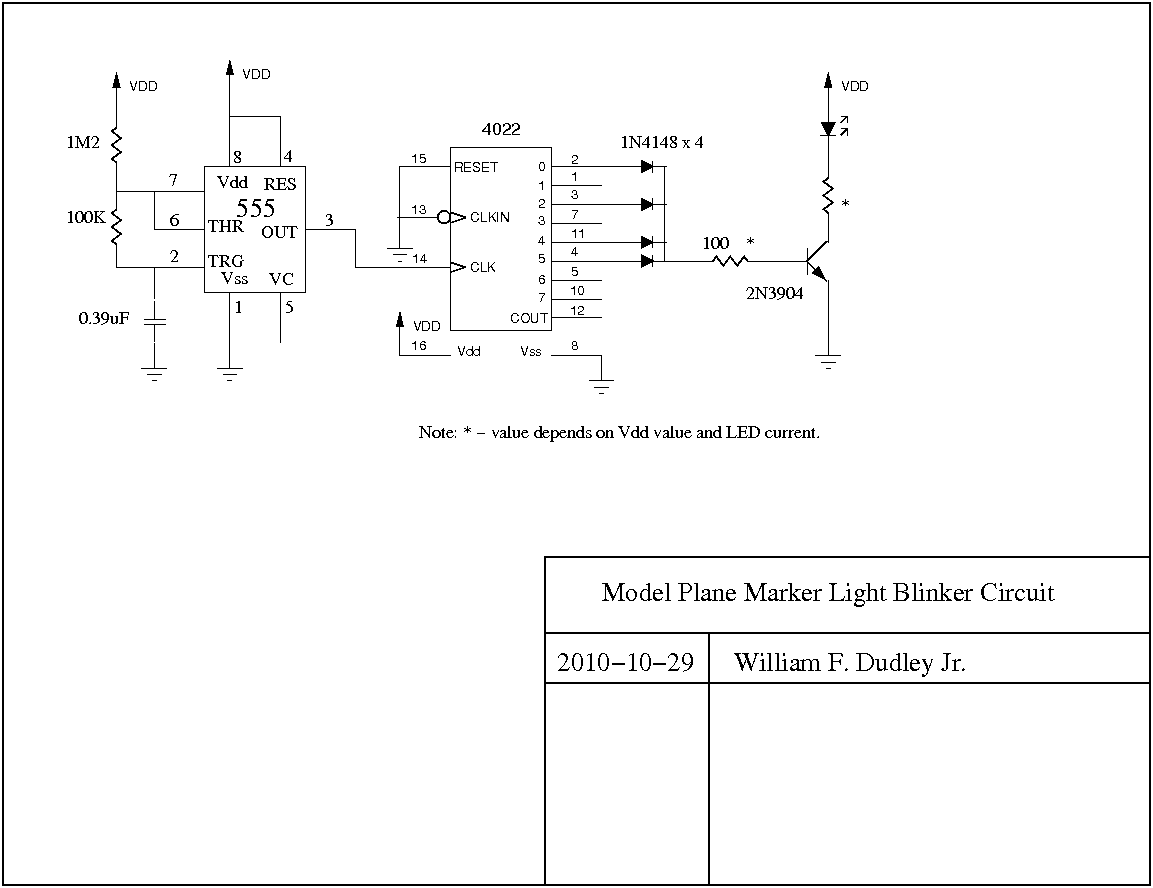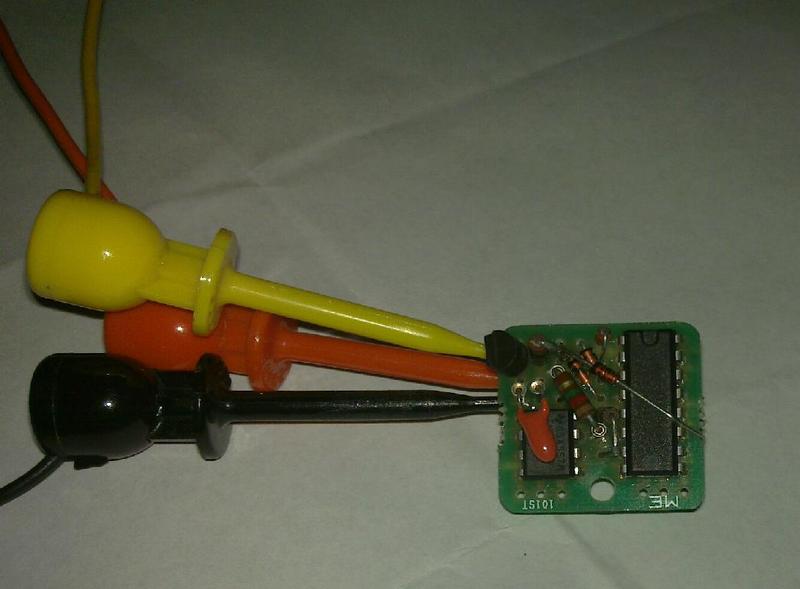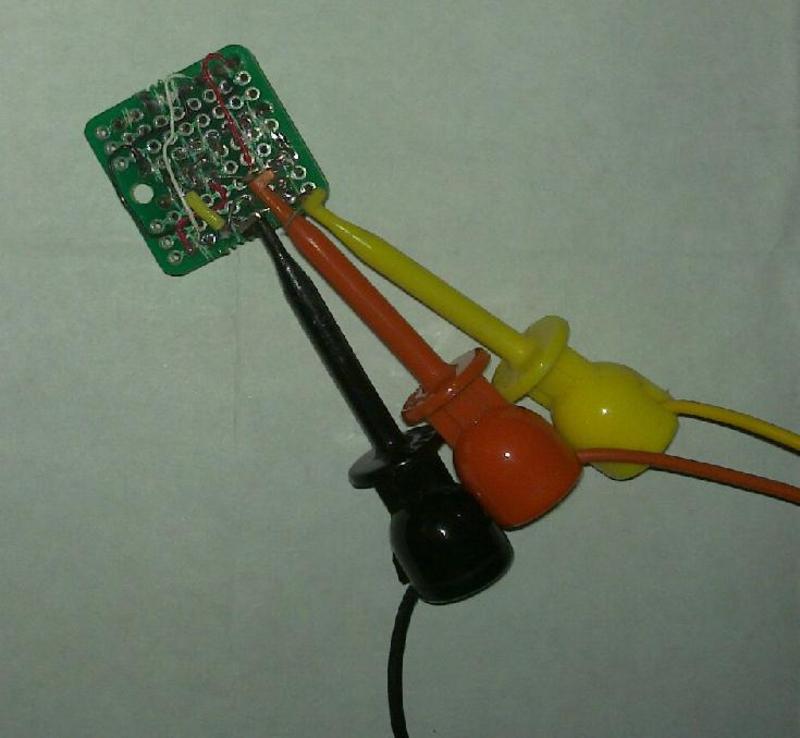
Blinking Marker Light CircuitA friend who flys model aircraft asked me to design a circuit to blink an LED in the standard marker light pattern. This pattern is: short on, short off, short on, short off, long on, long off. The trendy/expensive way to build this is to use a microprocessor, but there's a lot of overhead to that, in that you have to be able to write the code and then program the micro; not easy for the average guy who can solder components but has no programming knowledge. My friend wants to be able to make copies of this circuit for all his airplanes. I realized that a three-bit counter with 8 decoded outputs would be able to yield the "short short long" pattern. Since this wants to run off a 3.6v LIPO battery, it needs to be built in modern low-voltage CMOS. The oscillator is this low voltage 555 timer. It costs about $0.75 in onsies and runs down to 2 volts. The counter is this 4022 Counter. It costs about $0.45 in onsies and runs down to 3 volts. The last bit of circuit is a 4 input "OR" gate built from four diodes, which "OR"s the outputs of the decoded counter output to give the "short short long" pattern. Here's the schematic. Values that set the timing of the 555 were empirically determined to give a blink rate that "looks right". The 100 ohm resistor between the diodes and the base of the NPN transistor is a good value for running on 3.6v, but if you raise the battery voltage to something like 9v, you'll want to raise that value so as to not load down the counter outputs too much. And obviously, the resistor in series with the output LED depends on the battery voltage and also how much current you want to put through the LED (how bright you want it to be.) |

The (admittedly ugly) perf board version:







 Views
Views